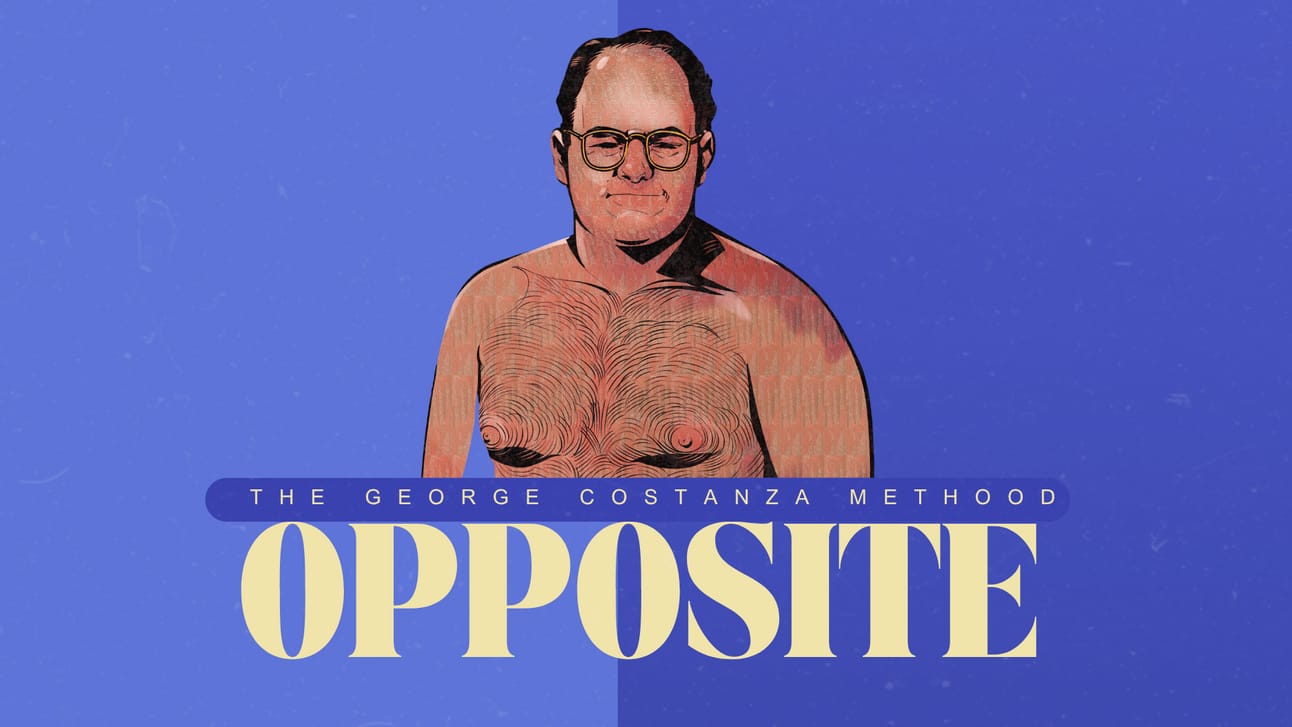
Listen now on Spotify and Apple Podcasts
👋 Hey dumdums,
Last week, we talked about intuition. That quiet gut-voice that notices when something feels “off.”
This week, we’re talking about what happens after you notice it.
Because once your brain spots something weird, it doesn’t just shrug and move on. It starts making things up.
A few days ago, I caught myself doing exactly that.
I was standing in line at a coffee shop, and the barista called out an order that didn’t make sense:
“Extra-hot oat latte with no oat.”
And instead of assuming I misheard, my brain immediately went full Spielberg.
Maybe “no oat” is a secret code. Maybe it’s a new detox movement. Maybe it’s the name of her band.
That, right there, is imagination:
Imagination = Your brain turning confusion into cinema.
Angus Fletcher calls it the second pillar of Primal Intelligence. (ie, the power to take intuition’s “something’s off” and expand it into “what if...?”)
💡 What Fletcher Means by “Imagination”

In Primal Intelligence, Fletcher describes imagination as the engine of storythinking
The ancient neural circuit that lets humans invent futures, alternatives, and meaning out of surprise.
Where intuition detects an anomaly, imagination builds a world around it.
It’s not about daydreaming unicorns or doodling ideas in a notebook. It’s about your brain’s ability to simulate possibilities. To run little movies of “what could happen” when reality breaks its pattern.
Computers can only project forward from past data.
Imagination, as Fletcher says, “leaps sideways” into possibility, metaphor, or metaphorical nonsense that can later turn out to be a real solution to a problem.
That’s why he calls imagination the “counterfactual generator”.
It’s what allows us to prepare for, adapt to, and even invent the future.
In the U.S. Army research labs where Fletcher taught narrative cognition, soldiers were trained to do exactly this. To take chaotic information, weave “what-if” scenarios, and spot the one that could save lives.
Not with data, but with stories.
That’s the secret power of imagination. It’s shouldn’t be thought of as fluff. It’s more like a survival algorithm disguised as creativity.
🧩 How It Works (Model of Imagination)
Here’s one way to think about how imagination might operate in a model inspired by Fletcher’s research on narrative thinking:
Spot the anomaly – The “no oat” moment. Something doesn’t fit.
Generate storylines – “What if this means…?” Your brain spins micro-movies, each exploring a possible cause or outcome.
Emotional filtering – You feel your way through the stories. The ones that resonate are the ones that stick. The ones that don’t, you get rid of.
Testing & iteration – You experiment, adapt, build prototypes of the story in real life.
Integration – A new belief, plan, or idea emerges. You’ve rewritten your mental map.
Imagination is basically your mind’s sandbox. Building, breaking, and rebuilding models of reality until one feels like it could work outside your head.
⚙️ Why It Matters
It’s how we outsmart uncertainty.
Data predicts the past, while imagination prepares us for what doesn’t yet exist.It’s how we empathize.
Storythinking lets you step into someone else’s shoes, literally running a simulation of their inner world.It’s how we innovate.
Every invention, from airplanes to avocado toast, began as someone asking “what if?” and refusing to shut up about it.It’s how we recover.
When life collapses one story, imagination writes another.
In a world addicted to optimization and “best practices,” imagination is a rebellion. It’s the refusal to let today’s logic dictate tomorrow’s potential.

Dumb Word of the Day: Confabulation
Confabulation (kun-FAB-yoo-lay-shun) is what neuroscientists call it when your brain confidently makes something up and then believes it.
It’s not lying per se. It’s more like “creative memory management.”
Let’s say someone asks, “Why did you buy 14 pounds of cheese?”
You don’t want to say, “Because I panicked.”
So your brain spins a story: “I’m experimenting with fondue as a metaphor for leadership.”
That’s confabulation.
It’s your imagination stepping in to patch reality with narrative duct tape.
The same system that fills gaps in memory is the one that helps you build new futures.
Fletcher would call that the adaptive magic of imagination, or more bluntly, your mind’s refusal to leave a blank space blank.
When something doesn’t make sense, your brain would rather invent coherence than admit confusion.
That’s how ideas are born.
And also how cults start.
Let’s try using it in a sentence: “After missing every deadline, the team entered a state of pure confabulation, insisting the delays were all part of a bold new ‘slow innovation’ strategy.”
The Imagination Challenge
Take one weird thing from your week (a glitch, misunderstanding, or mystery).
Now, instead of explaining it away, build three stories that could make it make sense.
One serious.
One ridiculous.
One secretly hopeful.
Ask yourself: which one feels alive?
That feeling is your imagination tapping you on the shoulder, saying, “Try me.”
Then take one tiny step to test it.
Write a paragraph, sketch an idea, or just tell the story out loud.
Reality starts as fiction anyway.
🎁 To wrap it up with a neat little bow
Intuition spots the glitch, and then imagination helps to make it meaningful and potentially useful.
It’s not really “fantasy.”
It’s more like our built-in simulator for impossible futures, emotional survival, and dumb ideas that could work.
So next time something feels “off”… notice it.
Then build a world around it.
Even if that world starts with an oat latte that doesn’t exist.
Next week: We’ll cover the third pillar, Emotion. Which is kind of like the compass that helps you decide which imagined worlds are worth living in.
Until then, keep making things up on purpose.
David 🎉
Dumbify: Dumb Ideas, Delivered Weekly (You’re Welcome).







